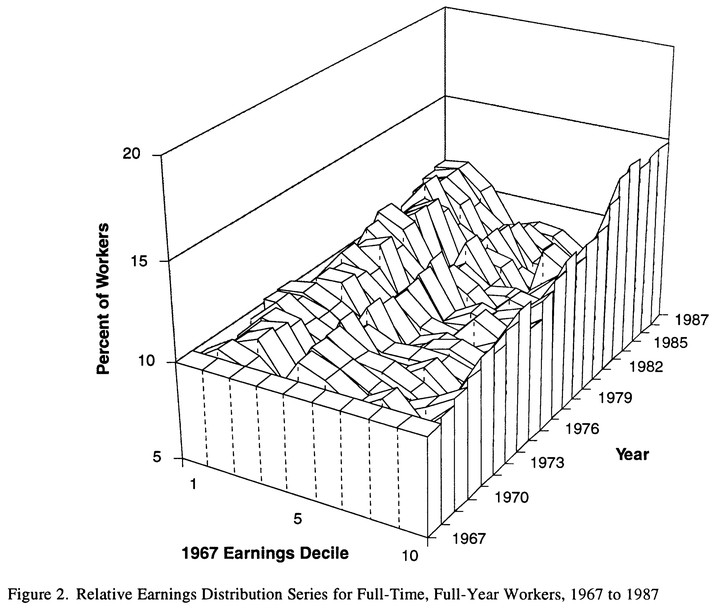
Abstract
Two positions dominate the debate over the recent increases in economic inequality in the United States. The ‘job-skill mismatch’ thesis attributes rising inequality to growth in the number of high-skill, high-wage jobs that leaves less-skilled workers behind. The ‘polarization’ thesis, in contrast, argues that the service shift generates growth in the number of both high-wage and low-wage jobs, and declines in the middle. Standard summary measures of distributional inequality cannot discriminate between these depictions of where job growth is occurring. We propose new methods for measurement that provide both summary and detailed information about the distributional shifts in earnings and a framework for statistical inference. Using data from the Curent Population Survey (CPS) on yearly earnings from 1967 to 1987, we show that the trends in distributional inequality vary considerably by race, gender, and time. While the evidence provides more support for the polarization argument, this thesis needs refinement if it is to account for the variations in changing inequality observed here.